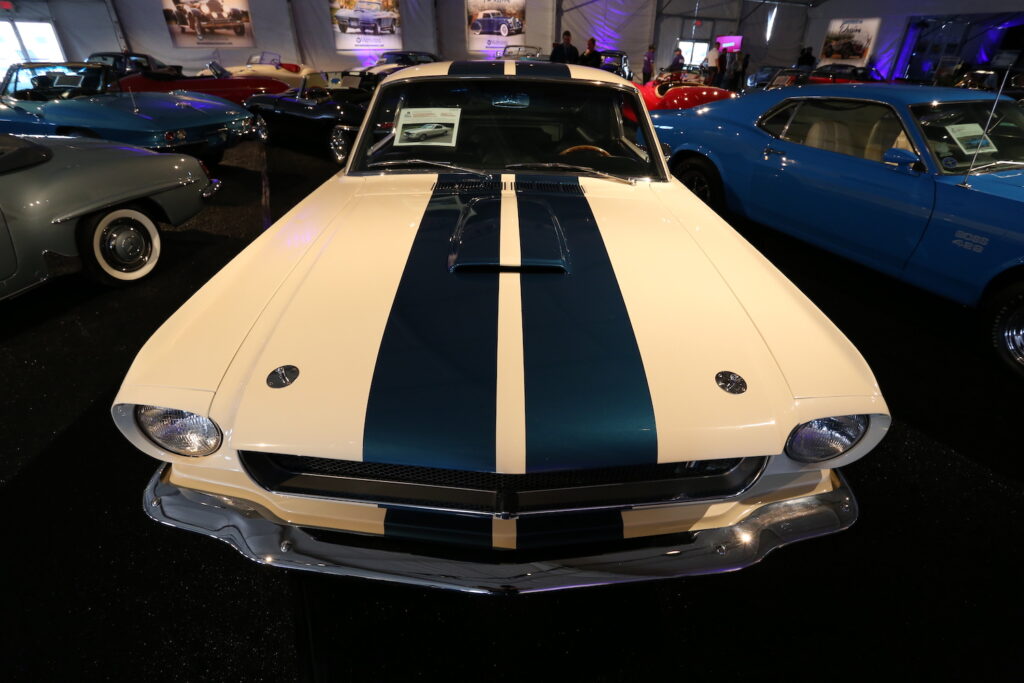Linkage #011 is all about muscle — and building the 14-page main feature for that issue got me thinking about rarity. Not just in the muscle car world, but in the car world in general.
I’ll have more about #011 next week, including a sneak peek.
Several of the people I interviewed for the main feature were just here in the Pacific Northwest this week, too — they were here to visit and view the Brothers Collection, which is a private collection near Salem, Oregon that’s built of the rarest of the rare in American muscle. For the past few days, their images have popped up on my social media feed. Hemi cars. LS6s. GT350s and 500s. Corvettes with every option available. One of one this. One of five that. And since I’m still thinking about muscle due to the issue that just shipped off to the press, I can’t help but dive in.
Every car in that collection is rare. But every rare muscle car is rare because at some point, it was too expensive, too specialized or too oddly configured to have been replicated often. People didn’t buy these cars in large numbers when they were new. That’s the very reason that they’re rare today.
Unless we factor in attrition, a car’s popularity can’t lead to rarity. But rarity can lead to a car’s popularity. Hence a museum that I keep hearing about from friends, acquaintances, family, coworkers, etc — a museum filled with the summits of the muscle car world, many of which were too specialized for their own good, at least back in the day.
Hemi Power!
Any muscle car person will tell you that they love Hemi ’Cuda convertibles. I think it’s safe to say that we all do — and I’m a GM guy.
These cars were expensive when they were new, and if you listen to their owners, they’ll tell you that the cars are flexi-flyers. No roof panel and Hemi power makes for “interesting” handling characteristics, and variable body gaps, too. Add that to a large base price and a changing muscle car world at the time and it’s really no wonder that there aren’t that many of them out there. Chrysler built just 11 426-powered ’Cuda ragtops in ’71.
Or to put it another way, only 11 people seriously wanted them that year.

But today we chase that number. That rarity drives collectors wild, and it should. Those cars are undisputed muscle car royalty. But rarity like that doesn’t always make the jump to desirability.
My late friend Paul used to have a saying: Rare — And Should Be!
His dream was to find a ’71 Barracuda convertible with a factory slant six and a column-shift 3-speed manual. He was convinced that there was at least one of them out there in some grandma’s carport, and he thought it would be great fun to take it to shows to listen to the commentary that would almost certainly follow. “Needs a 440!” “Needs a Hemi!” “Wow! Rare! Don’t change a thing!”
It would have been built on the same line as any of the 11 Hemi cars. And who knows? Maybe there are several one-of-one configurations of that car out there, too. By all accounts, it could be just as rare as a Hemi version. But would you want one?
Paul and I both figured that the car would probably handle better than a Hemi version, but the commentary would really be the only fun part of that experience for me. And how long would that be fun? How long would you be able to avoid an engine swap and eventual cash-out auction sale?
DIY Experiences
All of this clicked for me last night, as I was out in my shop doing some work to my just-completed ’67 C10 project truck.
If you’ve been following the market for 1967-72 GM trucks, you’ve seen prices go nuts over the past decade. So in order to find a rust-free project for reasonable money, I looked outside the normal channels to find something that I could build into what I wanted. I ended up at Dan’s Garage out in dry Pasco, Washington — Dan’s a friend of Paul’s from way back, which is how I met him, and he had several titled project trucks available in his wrecking yard.
This truck was a mostly original paint 1967 C20 with no engine, no transmission and almost no rust. It also had a factory stake bed — but it was cheap enough, so last year, I brought it home and got to work making it into the truck I wanted.
I had Dan remove the bed and I left it in the yard. I then took the cab off the frame, fixed some minor sheet metal issues, cut the frame in half and removed 20 inches of length to make it a short bed. I sourced a long pickup bed and chopped that down too, installed fuel-injected 6.0-L LS power and a 5-speed manual transmission, coil-over suspension and Baer brakes, and I then rewired the truck and put it all back together. It’s now a short bed-spec five-lug C10.
Last night, after I went through the Vintage Air control unit calibration process that I’d been putting off, I finally found the time to dive into the SPID tag in the glovebox. It had faded from the truck’s years as a desert derelict, and trying to make out the numbers and options drove me into some research.

I made out some of the codes from the faded tag, proving the truck’s ultra base-level configuration. Foam seat. Heater. Mirrors. Ammeter.
It also showed code CS20909 — a C20 stake bed.
I found out that in 1967, Chevrolet made 43,940 short-bed C10 trucks.
They made just 1,415 C20 stake beds.
For a second — just a split second — I felt bad about that. And then I realized that I’d chopped up something rare to make something desirable. At least to me. But judging from the custom C10 sale prices at auction in January, I’m not the only one thinking this way in today’s market.
There weren’t many people banging on Dan’s door for that stake-bed truck, that’s for certain. Short of the American Truck Historical Society, there’s not much call for old workers such as that one.
It all comes back to Paul’s comment about rarity. There’s a place for it all — from museum-grade Hemi cars through grandma’s curious leaning tower of power. Some of this stuff is rare and desirable. Some of this stuff is rare — and should be.
The key, I suppose, is finding your way to the experiences you want through that knowledge, and understanding what’s truly special and why.
Now that the truck’s done, I plan to drive it to that museum.














More Stories
Cars to Watch in Arizona
A Look Inside SEMA 2024
The Future of Muscle